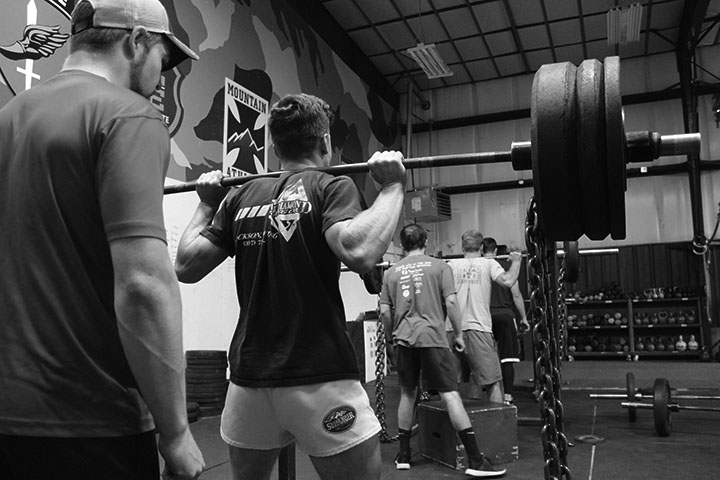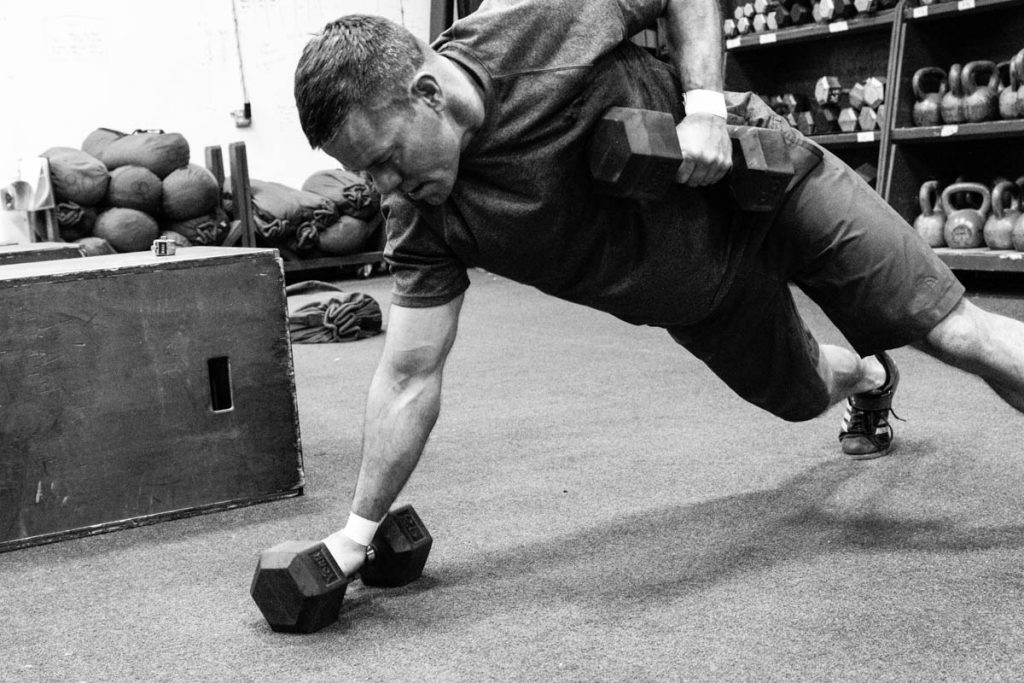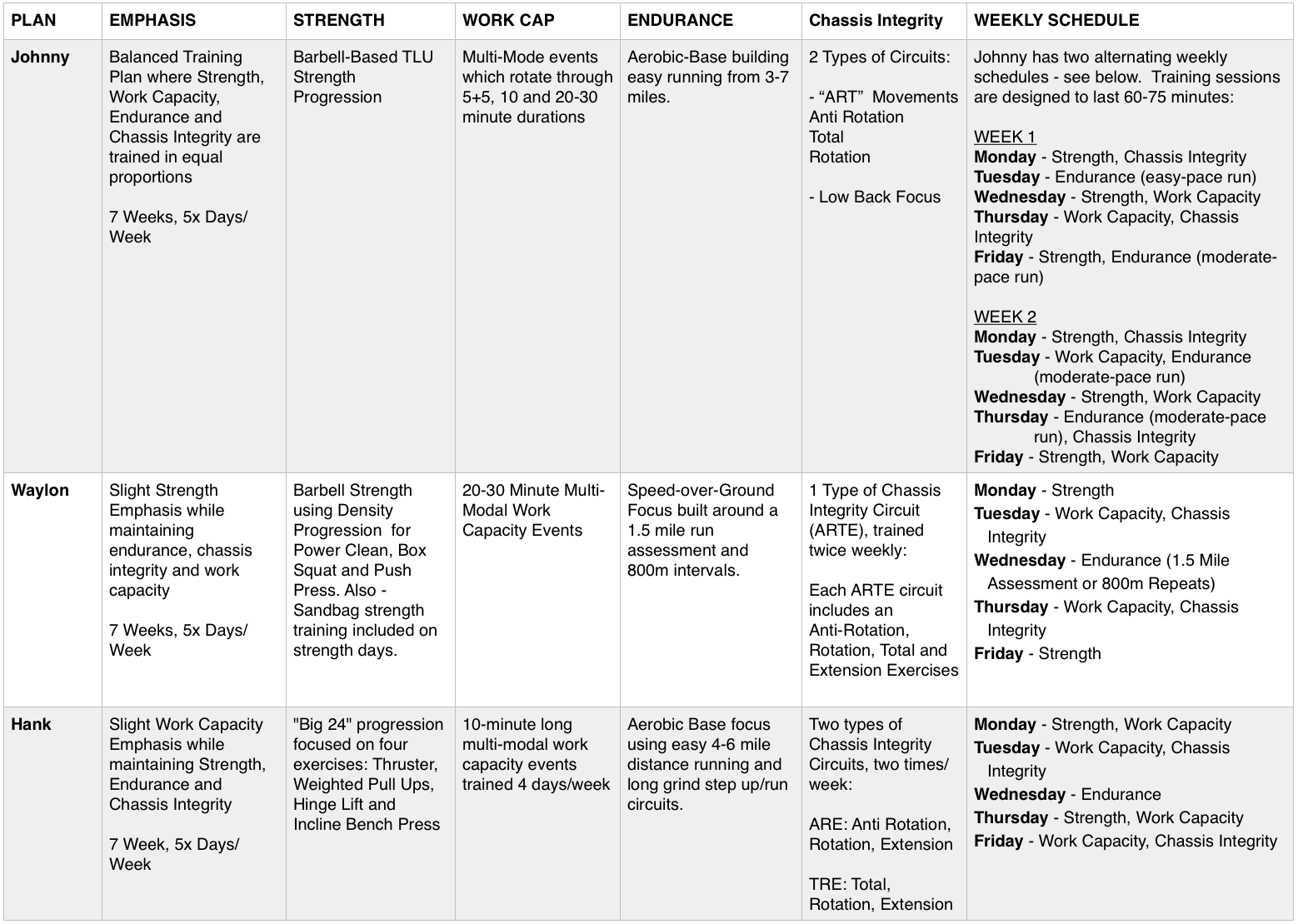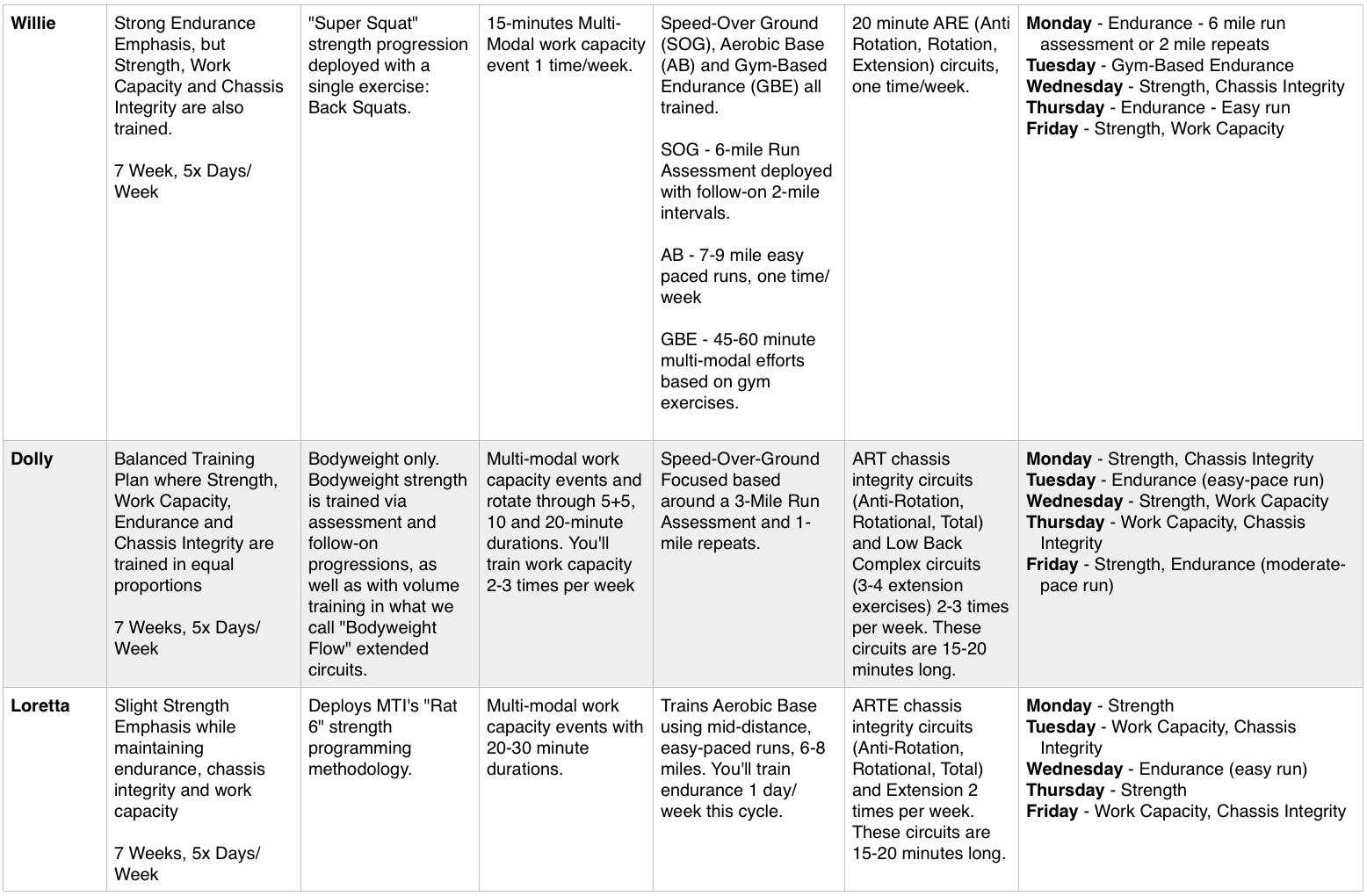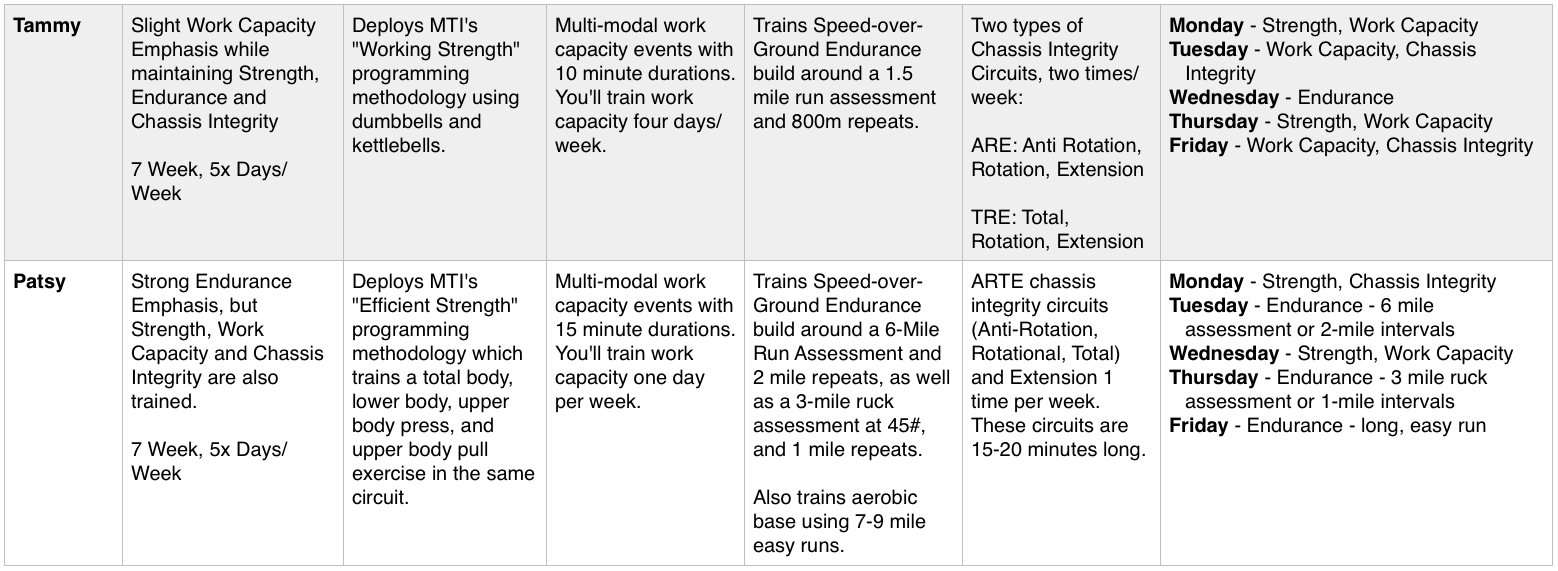KUDOS
“Just wanted to drop a line about what happened this weekend with influence of your programs. We are a training company based out of East Texas that primarily focuses on first responders and responsible citizens . Most of our trainings revolve around combative firearms, medicine and survival skillsets as well as equipping over 11 school districts in Texas for active threat response.
With that said our staff has been working through various programs of MTI to better ourselves to be able to better others for the past year. We have had quite a few clients ask about what we do personally to train and this past Saturday we invited a trusted group of students to join us working through some of your fundamental exercises for functional fitness. Our instructor Nick Gaines led the clinic and we consistently pushed your programs and institute to everyone involved during the training and after. You guys may see about 2 dozen or more spontaneous buyers and we will continue to push more to you. We believe in what you guys do and your why.”
QUESTION
I need your help! I had a grade two hamstring tear in early-March and really couldn’t do much for two months! The last month I’ve been getting my cardio back in and doing some spring climbing and I feel great, but I’m still very concerned about being in mountain shape for Rainier in early July.
When I first had the injury I thought I might have to cancel my summer in the Cascades but I think I can handle it with a perfect 5 weeks of training. What do you advise? I have 5 weeks starting today until my flight departs on July 3rd (4 weeks training and 1 week cooldown). I’m able to work flexibly and have the potential to train as much as my body can take.
Can you please recommend a tailored 5 week plan for me?
ANSWER
Start training.
– Rob
QUESTION
Just got the subscription in preparation for a selection some time in the future and was wondering if you had suggestions for increasing the training volume. I do 2-a-days already at my crossfit gym and would like to keep it up, however the fortitude v2 plan (I’m jumping in the middle of the SFOD-D packet) has a lower volume than I’m used to.
Basically I’m wondering if it would make sense to do each session twice or, since my long distance fitness needs improvement, do extra running/rucking. Maybe even just jump in with the crossfit class in the mornings?
ANSWER
Def. no more gym work – i.e. CrossFit or doubling up the gym-based work in Fortitude. Increase the endurance work in the plan (running, ruck running) by 1/3 to 50%.
– Rob
QUESTION
I’m having trouble finding the best fit program for me. I’m a military member, looking for improvements mentioned in your Greek heroes series (Strength, TAC SEPA, Endurance, etc.) I’m already fairly fit, and my workout consist of weighted and unweighted calisthenics, boxing, and sledge work, in addition to running. What program would you recommend? I’d like one that is open to the idea of improvement in all areas, and allows me to work in boxing if given the chance. Thanks!
ANSWER
– Rob
QUESTION
Just finished (up to week 4/5 two times in a row) the Peak Bagger in training for a weekend in Colorado, 2 days doing snow mountaineering with minimal ice and 2 days multi pitch rock climbing. Supplemented training with 1/2 hour 3-4 times a week of bouldering (up to V3/V4 most times) and top rope 1/2 times a week for this last part, and 1 or 2 days a week of heavier lifts to keep on the size (I’m 5’6″, 170, and can usually make a 1.5 mile in 8:30 at this point. Most ruck runs (I added up to 35lb during round 2) were between 7:30 and 8:30 pace.
Plan was great for legs and overall strength, a little lacking when it came to some ice work we did (surprises on the course for me). Overall a great approach.
I plan on doing Mt. Whitney up a 5.8 to finish this coming July (dates TBD, but likely around July 20th). What plan for this prep? Taking a week off now. Will probably do non-technical 14ers and hard 12ers before hand in the weeks leading up
ANSWER
I would have recommended our Alpine Climb Preseason Training Plan for this event – it would have matched up better as it combines elements of the Peak Bagging plan with grip/climbing programming.
Peak bagger is designed for non-technical walk ups like most Colo 14ers, the Grand Teton, etc.
For Whitney, I’d recommend our
Expedition Mixed/Ice Climbing Training Plan. Be smart with the programming here and your peak bagging efforts (14ers, 12ers) …. watch for overtraining and substitute your long mountain days for the long events in the plan. Get at least 1 day/rest/week.
– Rob
QUESTION
I’m taking over a conventional EOD company and I’m doing some searching and thinking about changing the PT climate there. The company is accustomed to PT on their own and being held accountable only for failure of an APFT or HT/WT. The PT average is around 240.
I love your programs and I’m a huge believer in your fitness philosophy. I don’t care so much about the APFT average as much as the need for functional EOD fitness. The next deployment will be SOF support and I don’t think the company is ready physically.
The unit operates in teams of two in combat, but will be expected to integrate fully in SOF formations.
Do you have any suggestions?
ANSWER
Depending upon the deployment location ….
Pls send their scores if you do – I’ll add them to our database.
– Rob
QUESTION
I just subscribed to MTN. Everything looks amazing. My question is what would you recommend to start off with programming?
I’m a cop working night shift and former military. I have a background in Crossfit so Olympic lifting isn’t foreign to me.
My goal is to be better all around (running, lifting, and moving more athletically). Would the Lethal Weapon program be a good place to start?
ANSWER
Go to the LE Daily sessions and start at the beginning of the most recent cycle, Omega.
– Rob
QUESTION
I have 2 questions. I’m currently in basic training for the Canadian army, I have done 2 workouts from mti. On ramp, and humility. My first question is my strength isn’t where I want it to be; would you recommend the big 24 or is there a different one youd recommend? Currently I won’t be able to do the gym 5 days a week because of training here but in 3 weeks I should be on a Monday- Friday schedule.
Second question – when I’m in the field and eating rations should I still try and reduce carb intake that aren’t from fruits of veggies? Thank you
ANSWER
Field Rations? No – eat like you would regularly. It’s too difficult when your menu is dictated. But … no deserts except for your cheat day.
– Rob
QUESTION
I just got a subscription with you guys, I have heard a lot of good things about your products. I do not know what program to follow, I am in the military. what plan would you recommend that I guess would hit it all stamina/strength?
ANSWER
If you’re fit, start with
Hector from our Greek Hero Series.
– Rob
QUESTION
I’m an infantry dude with the 82nd airborne and am looking into getting your programs since I’ve heard good things about them. I am looking to build up my strength and endurance before I go to Ranger School (not selection). Currently my pt test statistics are sitting at
62 push ups
90 sit ups
37:30 5 mile run
2:50 12 mile ruck
Id like to increase my push ups and sit ups to be above the 100 mark, and lower my 5 and 12 mile times as well. I have a good amount of time before I go to Ranger School so I’m less prioritizing training solely for that but more so building up my base level of fitness so I can be at the top of my battalion. I have about 6 months to kill before I need to start my trainup for Ranger School, what would you recommend I follow on your website that would do what I’m looking to achieve? (increase in muscular strength and maybe size, with an emphasis on my pt statistics so I guess endurance as well). Thanks in advance.
ANSWER
It’s not clear from your note exactly when you’re slotted for Ranger School. But in general, I’d recommend the plans/order in the
Ranger School Training Packet – finishing the last plan in the packet, the Ranger School Training Plan, directly before reporting. This packet is approx. 10 months worth of programming.
Email back if you have a longer or shorter time period.
– Rob
QUESTION
I apologize upfront for a lengthy email and wordy questions – feel free to paraphrase if you post these on the weekly Q&A.
1) I’m hooked on MTI’s programming and want to learn more about the theory behind the various Military Athlete programs. Do you have any specific pillars or critical components of being a tactical athlete? From my understanding of your training methodology the pillars are something along the lines of strength, endurance, work capacity, and TAC-SEPA…what am I missing/how far off am I?
2) I’ve read previously about the “mountain of fitness” and “fluid periodization”…can you describe these terms and explain what they mean in your programming.
3) Pat McNamara is a popular shooting/fitness instructor and retired special operator – his “Combat Strength Training” programming puts specific emphasis on ensuring that you incorporate movements in all 3 planes of motion (frontal, sagittal, and transverse)…I’ve never paid much of attention to which movements and lifts occur in which planes of motion. I’m curious what your thoughts are?
Thanks!
ANSWER
2. You mean the Fitness Mountain and Fluid Periodization …. covering these topics takes about 2 hours in a programming course – too much for an email! In general, the Fitness Mountain is how we conceptually think about mission-direct fitness for mountain and tactical athletes. The foundation or “Base” of the Fitness Mountain is where we train the “base fitness” attributes from the 5 types article. On top of this “base fitness” is where we train mission-specifically specific mission sets, schools, pfts, deployments, etc. “Base Fitness” is designed as day to day programming for athletes. Fluid Periodization is the proprietary theory we deploy to concurrently train the base fitness attributes – i.e. train strength, work capacity, chassis integrity, tactical agility and endurance (run, ruck) all in the same cycle, at the same time.
3. Can’t speak to McNamara’s programming, but the terms he uses I’ve seen used by team sports coaches for years. All that matters for MTI programming is outside performance – and this mission-direct focus alone drives our methodology. Over the years we’ve tested and tried multiple gym-based training theories and found most wanting in terms of transfer to the real world.
– Rob
QUESTION
I’ve been looking through your website quite a bit and am interested in trying some training programs. I was wondering if the grunt pt program is still available for active duty military. I can get to a page from google but other links will say the page can’t be found. Thanks in advance for your help.
ANSWER
Sorry – we canceled Grunt PT over a year ago – there just wasn’t enough interest. We did bundle several of the Grunt PT cycles
Here.
– Rob
QUESTION
I recently started a subscription to MTI and have a question, there’s so many plans to choose from and I’m having trouble finding the right one. I’m training for special operations right now in the Air Force right now but I’m not making the past requirements and wondered if you guys had a program not so much a beginner program but something that’s great to build up a solid base so I can begin training in the selection workout plans you offer such as pararescue/cro, buds, SF selection etc.
ANSWER
I’d recommend you work through the plans/order in the
Pirate Series – which are designed as day to day training for tactical athletes with water-based mission sets. These plans concurrently train strength, work capacity, chassis integrity, tactical agility and endurance (run, ruck, swim).
– Rob
QUESTION
I have a question regarding recovery. Why do you program for 4-5 days on and 2-3 days off? Why not two days on and one day off, or three days on and two days off, etc..
ANSWER
Answer is the “Burden of Constant Fitness” and professional athletes who must be fit for their jobs.
Soldiers, mountain guides, LE, Fire/Rescue – etc. can never afford to be out of shape, or, not fit for their work – which means they must constantly train. This creates a “burden of constant fitness.”
We encourage our athletes to train at work – because it is part of the job. Our 5/2 schedule is designed to give them the “weekend” off from training – I don’t want them training job-related fitness on their off-duty days. In the long run, this can lead to resentment.
We understand many don’t have typical 5/2 schedules – but we still recommend they don’t train during their off-duty days and adapt our programming to their schedule.
– Rob
QUESTION
I’m torn between your two training plans and was wanting your Insight on both. I’m looking at sfas ruck based selection plan and the SFOD-D plan. I’m currently training up to re attend sfas as I was a non select my first time I went. I was wondering what plan would be best for me as I like to strive to achieve peak performance with the most challenging aspects.
ANSWER
This plan is specifically designed for the fitness demands of SFAS.
SFOD-D selection is not just a harder SFAS ….. the selection events are very different and that plan won’t prepare you for SFAS.
– Rob
QUESTION
I have a couple quick questions about programming.
1. I’m currently working through Bodyweight Foundation. I’m doing 5on, 2off because of work. I plan to follow with bodyweight build. Should I take a week off in between or go straight to build?
2. I’m a mountain athlete (climbing/hiking/bc ski). After build should I go straight to the Greek heroine cycle or is there something in between you would recommend?
3. I’m debating getting an athlete subscription for the mountain sessions vs. doing Greek heroine cycles with breaks for trip/season specific buildups. What is the difference between mountain sessions and heroine? Do you recommend one over the other? Thanks!
ANSWER
2. See above – skip bodyweight build.
3. Do the Greek Heroine series.
– Rob
QUESTION
I’m currently attached to a MP CO and I’m the heavy gunner, carrying the m249 saw. What would you suggest as far as programs I can do?
ANSWER
I’d recommend starting our stuff with
Fortitude, then following it up with
Resilience. Fortitude has a solid strength and endurance (running, rucking) emphasis, and Resilience hammers your combat chassis (core).
– Rob
QUESTION
I am interested in getting started with your workouts. I am a 32 year old mountain athlete and enjoy Hunting, Hiking, Backpacking, and Skiing/Back-country skiing. I am having a bit of a hard time figuring out where to start. January of 2017 I fractured some lower vertebrae and my SI joint as well as bulged a disk (L4/L5) in a skiing accident off a large jump with too hard of a landing (landed on my feet in the flat past the transition).
It has been a long road but I have gotten rid of the pain and my referred nerve pain by using Dr. Eric Goodman’s Foundation training. Before I broke my back I was in the best shape of my life but over the last year, even though I got in about 50 days of skiing this winter, I have put on weight and lost a lot of my fitness. At the time of my injury I was 5’9″ and 180, and about 15% body fat. I am about 40-50 lbs over that now.
I am wondering where I should start to “re-build” my foundation for outdoor pursuits. I am not in any “hurry” for a particular pursuit/season/event as I am trying to rebuild from the ground up for future seasons.
ANSWER
QUESTION
I am currently on week 4 of the Military On Ramp Training Plan and since I have been out of Ranger School, I have seen a lot of improvement across the board in all areas, most notably cardio and endurance. My question is, if there is one area that I lack in, it is strength. My plan is to roll into the Greek Hero series after I am done with the OnRamp Plan but I was wondering if it is possible to concurrently use your plans in the strength training packet, as a second daily workout in conjunction with the Greek Hero series, or if this is demanding too much on the body.
ANSWER
– Rob
QUESTION
I just completed A&S for MARSOC and was selected. I now have 9 months to prepare for ITC and catch up to all the studs in the course. My weaknesses were definitely long distance running (20:25 3 mile slick) and swimming (8:15 300m in cammies). I feel somewhat comfortable in the water, but wish I was better at breath holds. I would say my strength is rucking (2:20:00 12 mile). I have a decent lifting background and used to do more crossfit/olympic lifting based training, however, it has been long enough that I’m not even sure what my max lifts are anymore. I have a subscription and MARSOC trainers have given me a GPP program. Having so many resources, I’m not sure whether to hit volume hard and not worry so much about strength or build up strength first to prevent injury and ramp up volume in later cycles. I was considering doing the “Military Athlete Endurance” coupled with the “Swimming Improvement” program, jump into the “pirate series”, followed by the ITC program. In your professional opinion, what would be the optimal way to maximize my performance during this 9 month period? Would you recommend doing something more strength focused first? Any help is greatly appreciated.
ANSWER
– Rob
QUESTION
I have a question about how to prepare for Ranger School. I have completed Humility and fortitude and just finished Busy Operator I. I am going to JRTC for a month on 15 June. My question is, when I get back, would it be wise to jump right into the Ranger School Prep Program or should I do another program first to get back into shape? I don’t see myself having much time to do PT during JRTC and I expect I’ll lose some weight purely from the environment change going from Drum to Polk and back. My goal is to get to Benning for Ranger School in October. Any help would be greatly appreciated. Thanks
ANSWER
Your Ranger School timeline dictates your training. You’ll want to complete the
Ranger School Training Plan the 8 weeks directly before Ranger School.
– Ro
Subscribe to MTI's Newsletter - BETA
